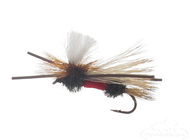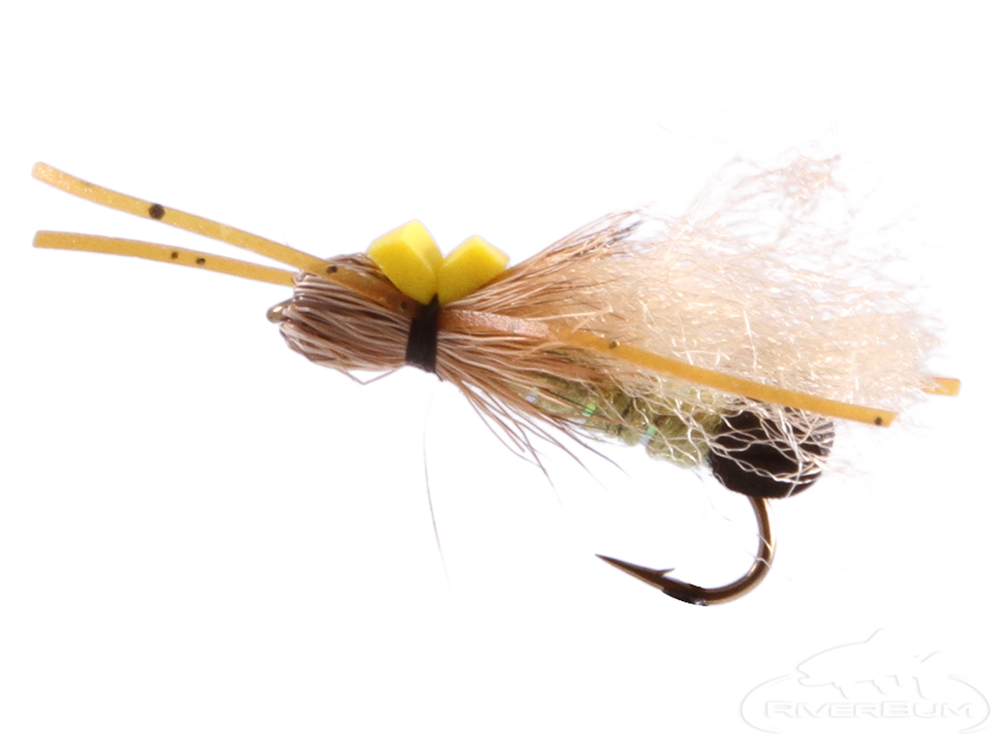Stoneflies
Stoneflies pack a large protein punch for trout. These large insects are an important part of a trout’s diet. The prime habitat for these nymphs is at the rocky bottom of the faster-moving areas of a river, as they require well-oxygenated and clean water to thrive. The presence of stoneflies is normally a good indication of water quality.
Stoneflies go through an incomplete metamorphosis; depending on their species, they can spend up to three years as nymphs before becoming an adult. When they hatch, mature nymphs crawl along the bottom of the river to the shore, then crawl out of the water to shoreline vegetation or exposed rocks. When they move to the shore, they easily get swept off the bottom where they become easy prey. Adult stoneflies emerge from their old nymphal shuck to fly off eventually, with the purpose of finding a mate.
When using stonefly nymphs, make sure that they resemble actual stoneflies in that stage with their prominent two tails, two wingcases, and two short antennae. Their length can range from 0.5 inches to 2 inches long! Their colors vary greatly as well. There of course are black stoneflies, but the salmonfly has orange in its coloration. Golden stones and yellow sallies have yellow coloration. Adults will have similar features, particularly the antennae and tails, with two sets of wings folded flat over their abdomen. Research the hatches in your area. We have a pattern to match them all. Early season, you may want to consider using a black stone fly nymph or a Skwala stonefly dry fly available here at RiverBum.
To find stoneflies in the river, wade into faster-moving water and get a rock to find nymphs clinging to the underside. If an emergence is about to occur or is occurring, empty nymphal shucks will be attached to nearby vegetation or dry rocks. With the right timing, you might also spot adult stoneflies flying over the water or on the water where the fish could take them.











